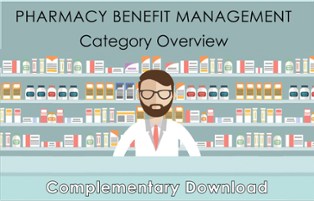What's the difference between brand name and generic medication? Is it the way they are manufactured? Their ingredients? Cost? Find out what really matters when choosing a medication.
Brand Name vs. Generic Medication
We hold these truths to be self-evident that ALL MEDICATION is created equal. Yes, you read that right, contrary to popular belief there isn't much difference between brand name and generic drugs... well, for the most part.
A brand name drug and its generic version must have the same active ingredient, dosage, safety, strength, usage directions, quality and performance.
The Food and Drug administration (FDA) have a standard of equivalency that generic drugs are tested against to ensure that they meet the same standards for effectiveness, safety and quality as brand name medication. In fact, many generic drugs are made in the same manufacturing plants as brand name products.
The FDA will not permit any drugs to be made in subpar facilities, so both brand-name and generic medication factories are required to meet the same standards. Because many brand name firms make generic copies of their own drugs it's often guaranteed that both type of drugs are produced the same exact way.
![]()
![]()
![]()
![]()
![]()
![]()
![]()
![]()
![]()
![]()
![]()
![]()
![]()
![]()
![]()
![]()
![]()
![]()
![]()
![]()
![]()
![]()
![]()
![]()
![]()
![]()
![]()
![]()
![]()
FDA's Six Criteria to Approve a Generic Drug:
- Contain the same active ingredients as the pioneer drug
- Be identical in strength, dosage form, and route of administration
- Have the same use indications
- Be bioequivalent
- Meet the same batch requirements for identity, strength, purity, and quality
- Be manufactured under the FDA's good manufacturing practice regulations required for pioneer product
![]()
![]()
![]()
![]()
![]()
![]()
![]()
![]()
![]()
![]()
![]()
![]()
![]()
![]()
![]()
![]()
![]()
![]()
![]()
![]()
![]()
![]()
![]()
![]()
![]()
![]()
![]()
![]()
![]()
Show Me What You're Made Of!

When it comes to drug components there are two factors that make up a medication, active and inactive ingredients. As mentioned above, the FDA requires generics to have the same active ingredients as the brand-name drugs. FDA regulations dictate that the generic medication's active ingredients must get the user's blood concentration within 10 percent of what the brand-named drug produces. Actually, it's rare for a generic drug to be higher or lower than 3 to 4 percent of the blood concentrations as name brands. So, there is no significant difference from these different drugs.
Inactive ingredients within medication do not have the same FDA regulations as active ingredients. Inactive ingredients have nothing to do with the remedial effect of the drug. These ingredients affect the drug’s appearance, including binding materials, dyes, preservatives, and flavoring agents.
Manufacturers of generics aren’t required to do studies on people. It is assumed that if they can achieve same blood concentration, they will achieve same results.
Ideally inactive ingredients are not going to affect the active ingredients in a drug or their effect on your body, however there are some cases where the inactive ingredient has affected users. If an inactive ingredient affect the time-release mechanism in a drug, you can be receiving the medication at a different rate than the brand-name. This is an issue if you are using NTI (narrow therapeutic index) drugs. Small changes in a NTI drug's concentration can lead to ineffective or toxic responses. However, the FDA regulations are tight enough that extreme cases are rare or never happen. If you have any concern, the best thing to do is talk to your doctor.
However, the FDA regulations are tight enough that extreme cases are rare or never happen. If you have any concern, the best thing to do is talk to your doctor, but usually mild symptoms resolve themselves.
![]()
![]()
![]()
![]()
![]()
![]()
![]()
![]()
![]()
![]()
![]()
![]()
![]()
![]()
![]()
![]()
![]()
![]()
![]()
![]()
![]()
![]()
![]()
![]()
![]()
![]()
![]()
![]()
![]()
The Generic Medication Journey
When a company develops a new drug, a seven-year period of exclusivity is issued before the FDA allows one generic drug to market. Once on the market that generic drug is given six months of exclusivity before the market is opened up to any manufacturer who can achieve the same drug concentrations in the blood as the pioneering brand name drug.
![]()
![]()
![]()
![]()
![]()
![]()
![]()
![]()
![]()
![]()
![]()
![]()
![]()
![]()
![]()
![]()
![]()
![]()
![]()
![]()
![]()
![]()
![]()
![]()
![]()
![]()
![]()
![]()
![]()
Show Me The Money!
You're probably wondering, if brand name and generic drugs work the same way and are often produced in the same factory, why are they treated differently? It all comes down to cost, but there is a simple reason for that. Brand name drugs must offset expenses that generics don't have: the costs of running trials, marketing, and advertising.
Generics costs 30 - 80% less than brand name drugs!
-578205-edited.jpg?width=203&name=HiRes(3)-578205-edited.jpg) Paying for more than just the actual production of the medication can be costly. It's estimated that the cost to develop and win marketing approval for a new drug is $2.6 billion. That estimate is not including the cost of clinical trials, development of failed medications and the advertising of the successful pioneering drug. These extra cost are the reason why generic drugs sell at an average of 80 to 85 percent less than the brand name product.
Paying for more than just the actual production of the medication can be costly. It's estimated that the cost to develop and win marketing approval for a new drug is $2.6 billion. That estimate is not including the cost of clinical trials, development of failed medications and the advertising of the successful pioneering drug. These extra cost are the reason why generic drugs sell at an average of 80 to 85 percent less than the brand name product.
Generic drugs save Americans more than $200 billion in prescription costs annually, that's right, you can save as much as 30 to 80 percent by switching to generic brands. In addition to the price tag difference, there is usually a savings on your co-payment for using a generic drug over a brand-name drug. With the discounts added up, Americans' have saved one trillion dollars in health care savings over the past decade.
When Gererics Cost More
There are some cases when a generic drug might cost you more than the brand name medication. One reason this has become more common is because companies are merging, which leaves little competition. Without competition, manufacturers don't have to worry about providing a better deal than other generic medication companies. Another factor that attributes to higher generic cost, is supply and demand. If few people are buying the medication then prices will rise to combat the cost of production.
Managing Your Pharamacy Benefits
Generic medications are chemically equivalent, lower-cost versions of brand named drugs. In recent years, the stigma against generics has waned and the industry is now seeing nearly 8 in 10 prescriptions in the U.S. being filled with generic medication. If your organization is looking for a better way to manage pharmacy benefits, check out this PDF on CoVest's Pharmacy Benefits Management (PBM) Category Overview.
Sources:




